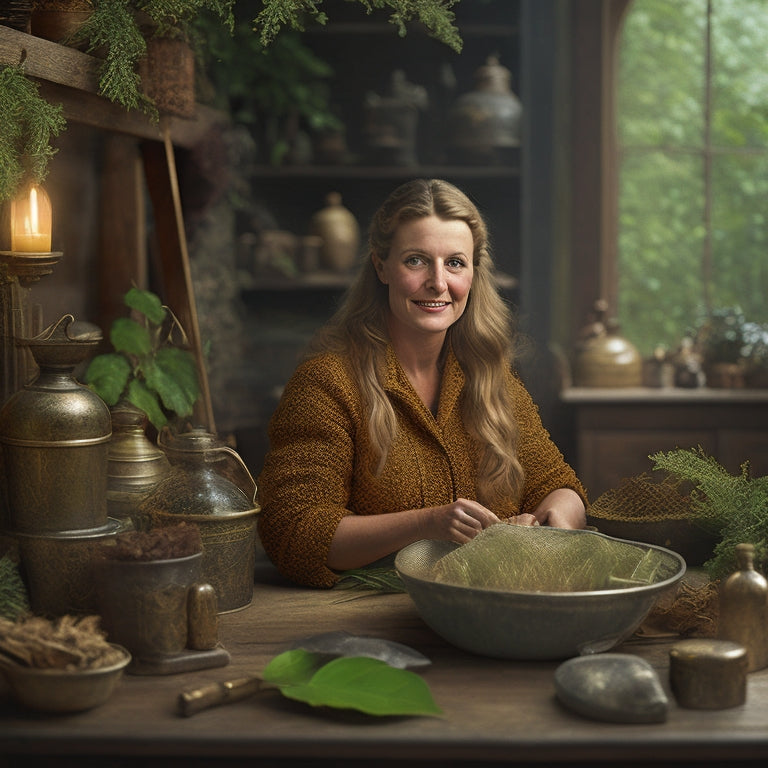
Preservation Prodigy: Holly Prochaska's Remarkable Contributions
Share
As a preservation prodigy, I'm fascinated by Holly Prochaska's remarkable contributions to cultural heritage preservation. Her innovative approaches have led to groundbreaking advancements in the field, ensuring the long-term protection of historical artifacts and documents. Through collaborative efforts, she's tackled complex preservation challenges and driven project successes. By embracing traditional and digital methods, she's secured cultural legacy for future generations. With a deep understanding of conservation techniques and a passion for education, Holly's work has empowered professionals and enthusiasts alike. I'm excited to explore her cutting-edge techniques, from 3D scanning to nanocellulose applications, and uncover the full scope of her remarkable achievements.
Key Takeaways
• Holly Prochaska's work in cultural heritage preservation combines art, history, and technology to ensure long-term protection of historical artifacts.
• Her collaborative conservation efforts involve interdisciplinary teamwork, international collaborations, and innovative solutions to tackle complex preservation challenges.
• Prochaska's education and training initiatives empower professionals and enthusiasts, sharing expertise and contributing to professional growth in preservation topics.
• Her fragile book handling strategies emphasize a deep understanding of conservation techniques, a clean environment, and precise documentation for future reference.
• Prochaska's innovative preservation methods, including 3D scanning and nanocellulose applications, revolutionize the field and strengthen fragile materials sustainably.
Preserving the Past
As I explore the world of preservation, I'm struck by the significance of preserving our cultural heritage, where the intricate dance of art, history, and technology converges. Historical document conservation is an essential aspect of this endeavor, guaranteeing the long-term protection of valuable artifacts.
I've come to realize that digital archive preservation is equally important, as it allows for the safeguarding of digital cultural heritage and provides a reliable means of accessing historical documents. By embracing both traditional and digital methods, we can secure the integrity of our cultural legacy for generations to come.
Collaborative Conservation Efforts
Through collaborative conservation efforts, I've witnessed firsthand the power of interdisciplinary teamwork in preserving our cultural heritage, where expertise from diverse fields converges to tackle complex preservation challenges. By combining forces, we can achieve far more than we could alone, driving project successes and fostering conservation partnerships that benefit everyone involved.
Some of the most memorable moments of my career have been:
-
Working alongside a talented team to preserve a rare, 19th-century Buddhist treatise
-
Co-creating surrogates for classroom use and storage with expert conservators
-
Participating in international collaborations, like the IFLA conference, to advance preservation knowledge
-
Celebrating 10 years of service with my dedicated team, recognizing their tireless efforts
-
Developing innovative solutions for encapsulating scrapbooks and other challenging objects
Education and Training Initiatives
In my pursuit of advancing preservation knowledge, I've had the privilege of developing and participating in various education and training initiatives that empower professionals and enthusiasts alike to better care for our cultural heritage. Through these initiatives, I've been able to share my expertise and passion for preservation with others.
| Training Techniques | Preservation Workshops |
|---|---|
| Photo conservation training | Digital Print Preservation and Identification |
| Papermaking process challenges | Surrogate Creation and Preservation Efforts |
| Sharing treatment reports | Collaborative Preservation Projects |
These education and training initiatives have allowed me to disseminate knowledge on various preservation topics, including training techniques and preservation workshops. By doing so, I've been able to contribute to the growth and development of professionals and enthusiasts in the field, ultimately ensuring the safekeeping of our cultural heritage for future generations.
Fragile Book Handling Strategies
Developing effective fragile book handling strategies is essential for preserving our cultural heritage. I've dedicated a significant portion of my work to refining techniques for safely storing and handling these delicate items.
Handling fragile books requires a deep understanding of conservation techniques and book repair methods. Here are some vital considerations:
- Ensuring a clean and stable environment for book storage and handling
- Using gloves and other protective gear to prevent oil and dirt transfer
- Supporting the book's spine and covers during handling and storage
- Avoiding direct sunlight and extreme temperatures
- Documenting every step of the handling and storage process for future reference
Innovative Preservation Methods
I've explored cutting-edge techniques, such as 3D scanning and nanocellulose applications, to revolutionize the field of preservation and push the boundaries of what's possible. These innovative preservation methods have opened up new avenues for unique conservation approaches and strategies. For instance, 3D scanning enables the creation of precise digital replicas, while nanocellulose applications offer a sustainable solution for strengthening fragile materials.
| Preservation Techniques | Advancements |
| Digital Print Preservation | Identifying and handling inkjet prints |
| Surrogate Creation | Collaborative preservation of rare objects |
| Nanocellulose Applications | Strengthening fragile materials sustainably |
| 3D Scanning | Creating precise digital replicas |
| Collaborative Projects | International collaboration for preservation efforts |
These innovative preservation methods have not only enhanced my work but also paved the way for further advancements in the field. By embracing these cutting-edge techniques, we can safeguard the safety and longevity of our cultural heritage.
Frequently Asked Questions
How Do You Determine the Ideal Storage Conditions for a Specific Collection?
When determining ideal storage conditions for a specific collection, I take into account Climate Control and Environmental Monitoring to guarantee a stable environment, evaluating factors like temperature, humidity, and light exposure to prevent degradation and secure the collection's longevity.
What Are the Most Common Mistakes in Handling Rare Books and Manuscripts?
When handling rare books and manuscripts, I've seen common mistakes like improper lifting, inadequate support, and failure to assess risks. I stress the importance of developing good handling habits and conducting thorough risk assessments to prevent damage and guarantee their long-term preservation.
Can Digital Preservation Methods Replace Traditional Conservation Techniques?
As I explore the world of preservation, I wonder if digital methods can truly replace traditional techniques. While digital preservation offers a 'safe haven' from the Digital Dark, I believe it's a Cultural Shift that complements, not replaces, the art of conservation.
How Do You Prioritize Preservation Projects With Limited Resources?
When prioritizing preservation projects with limited resources, I assess risks, identify high-priority items, and allocate budget strategically, taking into account factors like condition, rarity, and cultural significance to guarantee effective conservation and minimal damage.
What Role Does Community Engagement Play in Preservation Efforts?
I foster community engagement through public outreach, collaborative partnerships, and educational workshops, ensuring that preservation efforts resonate with diverse stakeholders and promote a culture of care for our cultural heritage.
Related Posts
-

Revamp Your Laundry Room With Smart Space-Saving
You're tired of feeling cramped and disorganized in your laundry room, and it's time to revamp the space to make the ...
-

Revamp Your Kitchen Storage With These Tips
A well-organized kitchen storage system is essential to a clutter-free and functional cooking space. To enhance your ...
-

Revolutionize Your Kitchen Sink With Must-Haves
Elevate your kitchen sink experience with must-have essentials that prioritize organization, efficiency, and style. S...


